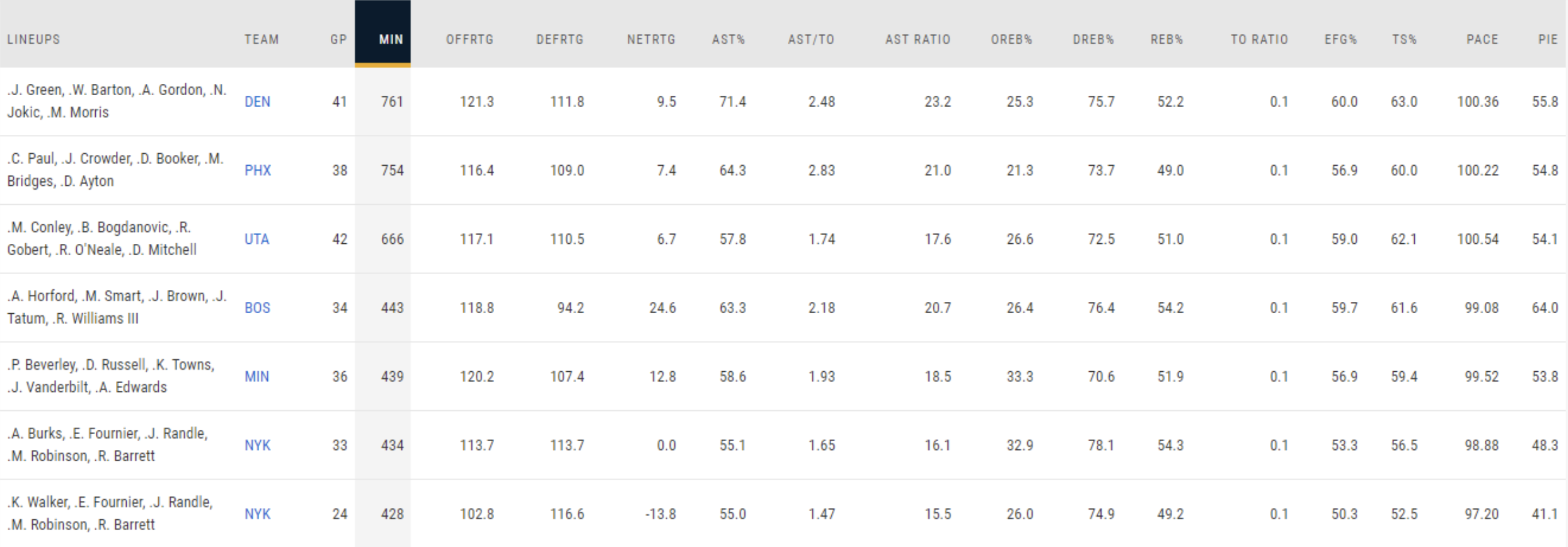Inside Tom Thibodeau’s turbulent season
Tom Thibodeau followed up a Coach of the Year campaign in 2020-21 with one of the more disappointing coaching campaigns in recent Knicks history in 2021-22. What went wrong, and how can Thibs and the Knicks learn from their mistakes in the future?
On Feb. 14, 2022, the New York Knicks, losers of 11 of their last 14 games, hosted the tanking Oklahoma City Thunder, who were playing without Shai Gilgeous-Alexander and Luguentz Dort, two of their best players. Playing on Valentine’s Day, this game, one that served as a symbol for the team’s mishaps, would be anything but a romantic occasion. The Knicks blew a double-digit lead, something that was becoming far too regular at that point in the season. To go along with that, Thibodeau, whose Knicks were the 11th seed in the East on the night this game occurred, decided to play sophomore Obi Toppin eight minutes in this game. This abundance of blunders shined a glaring light on the question many had been asking for quite some time: Is Thibodeau the right coach for this team?
Rotations
Thibodeau runs a very simplistic rotation scheme. Some have referred to it as “hockey shifts,” while others simply call it A-B-A. The formula, typically, is this; Thibodeau has his starting unit, which he plays together until the four- or five-minute mark of the first quarter, sometimes longer. Then, throughout the final few minutes of the quarter, he infuses his bench players into the rotation until, by quarter’s end, it is the bench unit. Whether this means four bench players and a starter or, like last season, five bench players, depends on whether the Knicks are deploying a nine- or 10-man rotation. Regardless, the rough structure remains the same.
The bench unit plays together until around the seven-minute mark of the second quarter. How long they stay out on the floor together is entirely dependent on the flow of the game. For instance, if a bench player has it going, Thibodeau might leave him out there through the end of the second quarter. On the whole, Thibodeau slowly re-enters his starters in and, typically, by about the five-minute mark, all five starters will be on the floor to finish the half. This structure has two huge issues that were exposed last season:
It is very hard for a bench player to see the floor for over 30 minutes a game. In fact, in the 137 games Obi Toppin and Immanuel Quickley (arguably the Knicks’ two most important bench players) came off the bench, they played over 30 minutes a combined 11 times throughout the entire season. Reminder: these two also led the Knicks’ rotation players in net rating for the season. There was incentive to play them more, but Thibodeau’s rotation structure did not allow it.
This leads to less combinations of players. Knicks fans know this all too well. Think about the combinations of players the Knicks seemingly refused to deploy last season. Four of the Knicks’ starters — Evan Fournier, RJ Barrett, Julius Randle, and Mitchell Robinson — shared the court with Quickley for just 39 minutes on the season. Barrett shared the court with Cam Reddish and Quentin Grimes for ZERO minutes. And so on. There are countless examples of player combinations we saw far too little of. When your rotations are as robotic as Thibodeau’s are, you end up overusing certain combinations and underutilizing others.
So, yeah, Thibs’ rotation strategy is flawed. Or maybe I should restate that: Thibs’ rotation strategy does not fit the roster he is coaching. The strategy — leaning on minimal lineup combinations, valuing continuity — works fine when the lineups you lean on have success. The Knicks had two different lineups — two variations of the starting lineup, one with Kemba Walker, one with Alec Burks — in the top seven of minutes played in the entire NBA. The variation featuring Walker had a net rating of -13.8 per 100 possessions, while the Burks version broke exactly even with a 0.0.
That’s 862 minutes dedicated to, essentially, one single lineup. For comparison, the Phoenix Suns’ starting lineup that led them to a franchise-best 64 wins only played 754. Thibodeau is the ultimate hammer and nail coach. We have two seasons of evidence that show his answers don’t involve adjustments, rather doing the same thing better.
But the Knicks’ roster isn’t a nail. It is a moth inside a cocoon fighting desperately to realize its potential. The Knicks are filled to the brim with young pieces who possess a range of outcomes not only (largely) unknown, but also extremely volatile. These are not guys that should be asked to master one thing and then repeat it, they should be allowed to spread their wings and see where the wind takes them. Is Quickley a point guard? Can Toppin play significant minutes at center? Can Barrett and Reddish be wings together in a small lineup? These are but a few questions the Knicks should have tried to answer long ago, but Tom Thibodeau simply refused to ask the questions.
The rest of this piece can be found exclusively on our Patreon for patrons of the Spinning and Winning level and higher. We hope to see you there!



